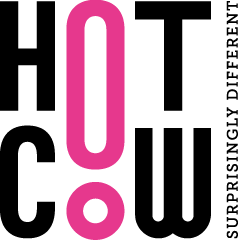Social media advertising is a great tactic to supplement your other inbound marketing efforts.
After all, the average person clocks more than six hours online every day.
Doesn’t it make sense to reach your target audience where they’re spending most of their time?
Here are a few reasons why you should consider advertising on the ‘big three’ social media networks.
With more than 1.59 billion registered users, Facebook is the largest social network of them all. But why advertise on it?
Well, Facebook helps brands reach the right audience, with many targeting options that appeal to very selective audiences.
Facebook ads are significantly more affordable than advertising on other platforms. This doesn’t guarantee a higher ROI however.
In order to make an ad appealing and relevant, Facebook offers several advertising options, depending on your brand’s goal, your audience’s needs and preferred format.
Twitter is the second-largest social network, with about 320 million active monthly users.
Twitter is a public platform and anyone can read Tweets, whether they’re signed up or not. It can therefore be a goldmine for brands. Using the Promoted Tweets functionality, you can jump on real-time world events and be ahead of the game.
Twitter’s audience expects instant gratification, commentary, and news updates in 140-characters. You can use this short character type of posting to create conversion based advertisements, as well as gaining new followers.
The defining feature of Twitter may be that you aren’t billed unless your desired outcome is performed.
For example, if you pay for a tweet with the objective of getting downloads for your app, you won’t be billed for click-throughs to your site too, unlike other social sites.
LinkedIn is the smallest social network on this list, with 97 million actively monthly users – it’s not to be sniffed at.
An obvious advantage of LinkedIn is that its user base is very clearly defined. Nearly everyone using the platform is a professional. So, if your target market is business people, it’s an obvious place to start.
Like Twitter, LinkedIn offers a native approach to advertisements in the form of sponsored updates. They appear directly in a user’s newsfeed and like inbound marketing, are designed to build relationships and drive leads.
With LinkedIn, you can target people based on location, job title, company type and size, market sector etc., similar to how you can advertise on Facebook.
Any others?
Don’t rule out any platform.
The point is, every business is different. What works for one company may not work for another. For instance, have you ever considered using Pinterest for business? Pinterest doesn’t have as many users as Facebook, but research shows that it has users with buying intent.
Hotcow is a non-traditional creative agency that specialises in experiential marketing that goes viral. Our campaigns generate buzz through crowd participation, PR and content sharing. Contact us on 0207 5030442 or email us on info@hotcow.co.uk.

